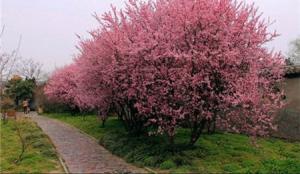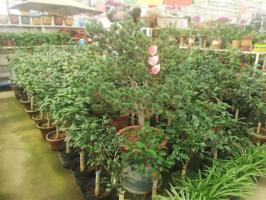How to Kill Algae in a Potted Plant
Algae growth in potted plants can be unsightly and can negatively impact plant health. The green film that often coats the soil's surface or grows on the plant's leaves can be a breeding ground for harmful bacteria, mold, and fungus. Here are some methods to kill algae in a potted plant:
Method 1: Physical Removal
The first method of killing algae in a potted plant is through physical removal. This method involves manually removing the algae from the soil and the plant's leaves. This can be done using a small hand tool, such as a garden trowel, to scrape away the algae from the topsoil. For algae clinging to the plant's leaves, a soft-bristled brush or a damp cloth can be utilized to gently scrub the surface. This method is best for minor algae growth or as a preventative measure.
Method 2: Water Control
The second method of killing algae in a potted plant is through controlling the water supply. Algae thrive in moist environments, so reducing the level of moisture in the soil can inhibit algae growth. Watering the plant less frequently can accomplish this, or changing the drainage in the pot can help. Another method of managing water is to distribute a small amount of perlite (a volcanic glass that holds water and creates air flow in soil) to the topsoil of the plant. This can help to dry out the surface faster and make it harder for the algae to thrive.
Method 3: Chemical Control
The third method of killing algae in a potted plant is through chemical control. Using algaecides or fungicides can be an effective way to kill algae. These products come in granular or liquid form and can be mixed with water and then applied to the plant in accordance with the instructions on the label. It is important to note that using a chemical control method requires careful attention to the instructions, and can also negatively impact the plant's health. Thus, it is important to use this method only as a last resort and always with caution.
Method 4: Introduce Soil Sterilization Techniques
The fourth method of killing algae in a potted plant is through soil sterilization. Soil sterilization can be accomplished by baking the soil, microwaving it, or using a garden supply such as Beneficial Nematodes. By introducing new, sterilized soil into your pot, you can remove the source of the problem effectively, and inhibit further growth of the algae.
Conclusion
Algae in potted plants can be an unsightly and unhealthy problem. However, with a few simple techniques and a bit of caution, you can rid your plant of algae and restore its health. Depending on the severity of the algae growth, one or a combination of methods may be necessary. Ultimately, removing the algae and preventing it from returning will help to maintain the overall health and beauty of your potted plant.

 how many times do yo...
how many times do yo... how many planted tre...
how many planted tre... how many pine trees ...
how many pine trees ... how many pecan trees...
how many pecan trees... how many plants comp...
how many plants comp... how many plants can ...
how many plants can ... how many plants and ...
how many plants and ... how many pepper plan...
how many pepper plan...
































